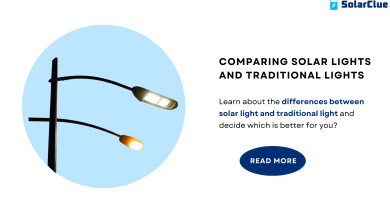What Is A Grid Connected Solar Rooftop System 2
Table of Contents As the world evolves, renewable energy sources are becoming increasingly popular and deemed vital for a sustainable future. Among these sources, solar energy has emerged as a preferred option for many due to its widespread availability and decreasing costs. A popular and efficient way to harness this energy is through a grid-connected solar rooftop system. This article seeks to explore the intricacies of grid-connected solar rooftop system, its benefits, and workings. A grid-connected solar rooftop system, as the name suggests, is a solar power generation system that is directly connected to the utility grid. It consists of a solar photovoltaic panel array installed on the roof of a building and a grid-tie inverter responsible for converting the direct current (DC) produced by the panels into alternating current (AC) suitable for use in homes and businesses. This system can utilize the constant power of the sun to significantly reduce reliance on conventional electricity supplies. The operational mechanism of a grid-connected solar rooftop system is quite straightforward. The system capitalizes on the photovoltaic effect to convert sunlight into electricity. Sunlight hits the solar panels, causing electrons in the solar cells to move – this generates a flow of direct current (DC). This DC is then passed through a grid-tie inverter that converts it into alternating current (AC). The AC electricity is then consumed directly by the electrical loads connected to the grid in the building. Any excess power produced is sent back to the utility grid, essentially making your electricity meter run backward. There are several significant benefits associated with utilizing a grid-connected solar rooftop system, making it a desirable choice for many homeowners and businesses. Firstly, it allows for solar energy to provide electricity during the day, and at night electricity can be drawn from the grid. This leads to substantial energy bill savings, an important consideration for many people. Another key advantage is the opportunity to earn money by feeding unused power back into the utility grid, where it is available for use by other consumers. This concept, known as net metering, can provide a significant economic incentive for using a grid-tied solar system. Moreover, the system helps reduce carbon footprint and reliance on non-renewable energy sources. It is noteworthy that the savings and benefits from installing a grid-connected solar rooftop system often balance the initial installation costs over a reasonable period. With the growing focus on environmental sustainability, the use of a grid-connected solar rooftop system aligns with this worldview. This system aids in the fight against climate change by reducing reliance on fossil fuels for electricity. The sun is a plentiful and renewable source of energy, and by tapping into this resource more extensively, we can reduce greenhouse gas emissions substantially. Additionally, solar energy also has potential economic benefits. It presents an opportunity for job creation in the renewable energy sector and can help stimulate economic growth. As such, adopting a grid-connected solar rooftop system is a step in the right direction towards a sustainable future. In conclusion, a grid-connected solar rooftop system is a cost-effective and environment-friendly setup that harnesses the abundant sunlight to provide electricity. As well as offering substantial savings on energy bills, the system also supports sustainability goals by reducing greenhouse gas emissions and dependency on non-renewable energy sources. The financial benefits coupled with the positive environmental impact make grid-connected solar rooftop systems a win-win solution and a remarkable stride in renewable energy technology. As we stride towards a sustainable future, integrating such renewable power sources becomes imperative. Introduction
Understanding a Grid-Connected Solar Rooftop System
How does a Grid-Connected Solar Rooftop System work?
Benefits of a Grid-Connected Solar Rooftop System
Importance of Solar Rooftop System for a Sustainable Future
Conclusion



